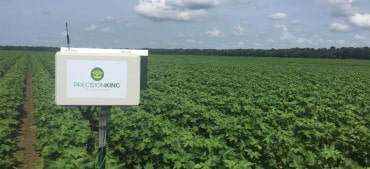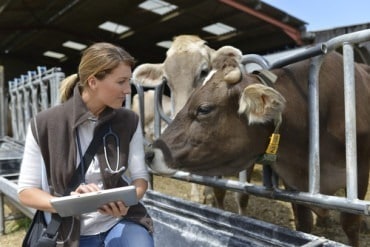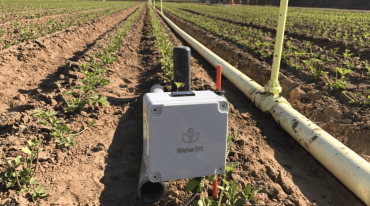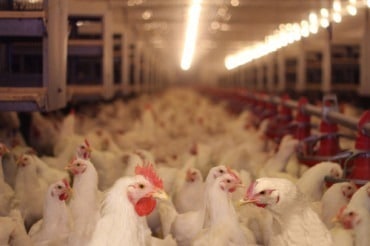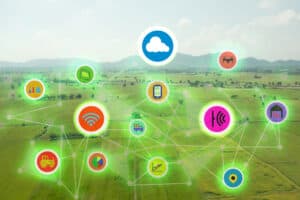
As precision farming continues to evolve, it holds the potential to meet the demands of our rapidly growing population while forging a path toward a more efficient and productive future of farming.
For generations, farmers have relied on their senses and their experience to make their living. They use their sight to detect diseases and pests in crops, assess plant health, and scan the horizon for signs of rain. Their touch allows them to gauge the condition of the soil, feeling for the right texture that signals optimal moisture and nutrient content. In modern farms, that approach is getting an assist from precision farming.
Why? Each sunrise also introduces a fresh set of challenges for farmers, who have endless to-do lists and limited time, money, and resources to accomplish them. Advanced technologies have emerged to extend their senses and instincts, making it possible to produce more food more efficiently – a critical advancement to meet the rapidly increasing population worldwide.
This technological extension of a farmer’s senses and intuition that provides superhuman capabilities is powered by precision farming.
What Is Precision Farming?
Precision farming, also called precision agriculture, refers to the use of technology to refine agricultural practices. By leveraging advanced technologies, such as machine learning algorithms, automation, and sensors, precision farming can enhance the efficiency and accuracy of farming operations. The intersection of instinctive farming wisdom and modern technology creates new opportunities for farmers to accomplish more tasks in less time and with less manual work.
Harmonizing Intuition and Technology
Farm machines today are advanced robots equipped with sensing and computing capabilities to modernize farming practices. Sensors, cameras, and high-speed processors enhance the accuracy and efficiency of everyday tasks so farmers can reduce waste and maximize the effectiveness of their practices.
One of the first steps toward a healthy, abundant crop is the precise placement of seeds in the ground. Advanced robotic technology enables seeds to be planted at the exact spacing necessary for ideal growth while at the same time delivering a targeted application of fertilizer at the exact moment each seed meets the soil. Traditionally, farmers continuously sprayed starter fertilizer across the entire field, even though only the seeds require it. Today, sensors used in advanced planting technology effectively sharpen the farmer’s sense of sight and their reflexes so they can apply starter fertilizer only where it’s needed, reducing costs and limiting environmental impacts.
Computer vision acts as another extension of the eyes. As plants begin to emerge from the ground, cameras can “see” them while high-speed processors and machine learning algorithms can identify which plants are crops and which are weeds. When nurturing the crops, embedded systems on the machine use this identification to spray only the weeds, reducing the use of herbicides and providing farmers with cost savings of up to 66%.
Similarly, sensors on a machine extend a farmer’s touch, “feeling” where crops are located, translating that information into data shared with embedded processors that can then steer the machine between rows of crops, avoiding crop damage while also enabling hands-free steering for the machine operator.
When crops are ready to be harvested and sold, factors like moisture level can impact the nutrition content and quality of the crop, consequently affecting the price. Having real-time data about the moisture content of harvested crops helps farmers make decisions about which crops to sell and which to store, decisions that impact their bottom line for the season. Combines, the farm machines used to gather crops, are also equipped with sensors and processors to detect moisture levels in real time so farmers can determine the most optimal and profitable time to harvest crops.
See also: How IoT Is Beneficial to the Modern Farming Industry
Empowering Agriculture’s Sixth Sense: The Indispensable Role of Data
Farmers have always adopted new technology – from a new type of plow to the mechanical tractor to the technology that enables precision farming. Building on this history of technological adoption, farmers are now leveraging data more than ever before. Farmers have always used data to run their farms and make decisions about their businesses. However, what’s transformative about today’s landscape is the scale and depth of data now available, coupled with technologies that can turn data into actionable intelligence.
Consider the modern-day tractor. It’s much more than a piece of machinery. It’s a mobile data hub, capturing instant insights on productivity and machine health as it traverses fields. Each pass generates a detailed snapshot of the field, adding another layer of data to the farmer’s knowledge base.
Using artificial intelligence and machine learning, precision technologies sift through the vast ocean of data to spot patterns, identify trends, and predict outcomes. For instance, by analyzing the accumulated data, algorithms can predict when a farmer will be finished planting a field, when they’ll need to unload a full cart of grain, or even recommend the most efficient path to drive through a field. Real-time sensors on machines during harvest can recommend settings adjustments so that the farmer can optimize how the machine processes harvested crops, optimizing his yield.
Embracing the Future with Precision Farming
Precision farming is modernizing agriculture and addressing many of the challenges faced by farmers. By enabling superhuman senses through technologies like computer vision, sensors, and automation, farmers are empowered to make pinpoint decisions and optimize their operations. As precision farming continues to evolve, it holds the potential to meet the demands of our rapidly growing population while forging a path toward a more efficient and productive future of farming.



